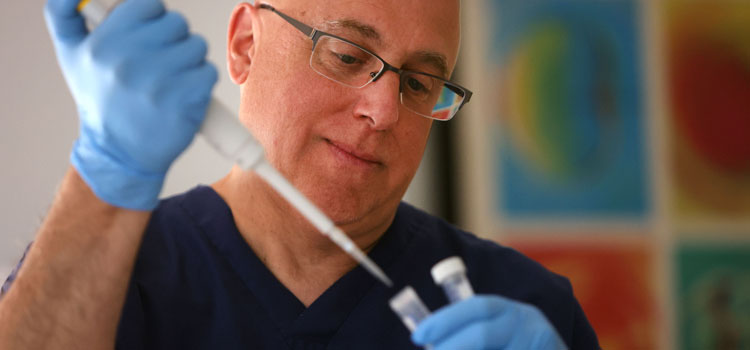Infertility Education
Frequently Asked Questions
Q: What is Infertility?
A: Infertility is a disease of the reproductive system that impairs one of the body's most basic functions: the ability to conceive a child. Establishing a healthy pregnancy is a complicated process that depends upon many factors: the production of healthy sperm by the man and healthy eggs by the woman; open fallopian tubes that allow the sperm to reach the egg; the sperm's ability to fertilize the egg when they meet; the ability of the fertilized egg (embryo) to become implanted in the woman's uterus; and sufficient embryo quality.
Finally, for the pregnancy to continue to full term, the embryo must be healthy and the woman's hormonal environment adequate for its development. When just one of these factors is impaired, infertility can result.
Q: What Causes Infertility?
A: No one can be blamed for infertility any more than anyone is to blame for diabetes or leukemia. In rough terms, about one-third of infertility cases can be attributed to male factors, and about one-third to factors that affect women. For the remaining one-third of infertile couples, infertility is caused by a combination of problems in both partners or, in about 20 percent of cases, is unexplained.
The most common male infertility factors include azoospermia (no sperm cells are produced) and oligospermia (few sperm cells are produced). In rare cases, infertility in men is caused by a genetic disease such as cystic fibrosis or a chromosomal abnormality.
The most common female factors are ovulation disorders, blocked fallopian tubes, diminished ovarian reserve, endometriosis, and structural problems of the uterus.
Q: How is Infertility Diagnosed?
A: Couples are generally advised to seek medical help if they are unable to achieve pregnancy after a year of unprotected intercourse, but often it is advisable to seek help sooner. A reproductive specialist will conduct a physical examination and take a detailed history to evaluate physical disorders that may be causing infertility. Basic tests include imaging studies of the uterus, ovaries and fallopian tubes, testing of ovarian function in the female, and a semen analysis in the male partner.
Q: How is Infertility Treated?
A: Most infertility cases – 85 to 90 percent – are treated with conventional therapies such as the use of fertility medications, cycle monitoring, intra-uterine insemination (IUI), or surgical repair of reproductive organs, without the need for in vitro fertilization (IVF).
Q: What is in vitro fertilization (IVF)?
A: In infertile couples where a woman has blocked or absent fallopian tubes, or where a man has a low sperm count, in vitro fertilization (IVF) offers a chance at parenthood to couples who would otherwise have no hope of conceiving a child. It is also used to treat a wide variety of other infertility diagnoses, as it offers a drastic improvement to the chances of conceiving when other treatment options have failed.
In IVF, eggs are removed from the ovary through a procedure in the office, and mixed with sperm in the laboratory. Fertilized eggs (embryos) are then placed in the women's uterus, thus bypassing the fallopian tubes.
IVF has received a great deal of media attention since it was first introduced in 1978, but it actually accounts for less than five percent of all fertility treatments in the United States.
Q: Is in vitro fertilization (IVF) Expensive?
A: The average cost of an IVF cycle in the United States is $12,400. Our clinic, however, offers some of the highest success rates in the country at prices that are far lower than the national average, and in fact are among the lowest in the country. Additionally, some insurance providers cover some or all of the expenses associated with IVF. We understand that cost can be a major obstacle to many couples, and will work with your individual needs in an effort to provide services in a way that you can afford.












